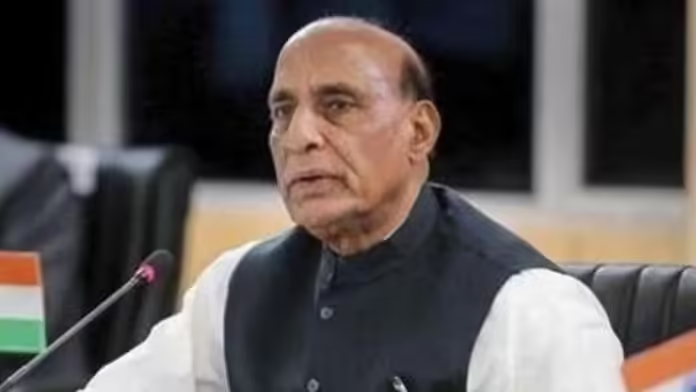New Delhi: Aiming to facilitate rolling out integrated theatre commands to bolster synergy among the three services and transform the military into a technologically-advanced combat-ready force, the Defence Ministry on January 1, declared 2025 as the year of defence reforms.
The reforms planned by the Defence Ministry will broadly aim to make the defence acquisition procedures simpler and time-sensitive, ensure deeper collaboration among key stakeholders, break silos, eliminate inefficiencies and optimise utilisation of resources.
“Ensuring India’s security and sovereignty amid challenges of the 21st century, the reforms would lay the foundation for “unprecedented” advancements in defence preparedness,” stated Defence Minister Rajnath Singh.
The theatre commands assumes significance as it virtually indicated the Defence Ministry’s plan to unveil the reform measure in 2025. Under the theaterisation model, the government seeks to integrate the capabilities of the Army, Air Force and Navy and optimally utilise their resources for wars and operations.
Each of the theatre commands will have units of the Army, the Navy and the Air Force, as per the theaterisation plan, and all of them will work as a single entity looking after security challenges in a specified geographical territory. At present, the Army, Navy and the Air Force have separate commands.
At a high-level meeting chaired by Defence Minister Rajnath Singh, the decision to observe 2025 as the year of reforms and the broad objectives under it was finalised. The focus in 2025 will also be on new domains such as cyber and space, and emerging technologies like artificial intelligence, machine learning, hypersonic and robotics, the Ministry said.
Defence Minister Singh said, “’Year of reforms’ will be a momentous step in modernisation journey of the armed forces.”
The ministry in a statement said that in order to give impetus to the ongoing and future reforms, it was unanimously decided to observe 2025 as the ‘year of reforms’. The reforms would aim at transforming the armed forces into a technologically advanced combat-ready force capable of multi-domain integrated operations.
According to the Ministry of Defence, the Singh-led meeting held that the reforms should aim to further bolster jointness and integration initiatives and facilitate the establishment of the integrated theatre commands. It was agreed that associated tactics, techniques and procedures required to win future wars should also be developed.
The meeting also called for developing a shared understanding of operational requirements and joint operational capabilities through inter-service cooperation and training.
Emphasising on the need to make acquisition procedures simpler and time-sensitive to facilitate swifter and robust capability development, the meeting also underlined the need for focusing on collaboration across various stakeholders in the defence ecosystem and breaking silos.
The aim of the defence reforms also include rolling out steps to facilitate technology transfer and knowledge sharing between the defence sector and civil industries and promoting public-private partnerships by improving ease of doing business.
The Ministry should work towards positioning India as a credible exporter of defence products, fostering R&D and partnerships between Indian industries and foreign original equipment manufacturers, it said.
While pitching for instilling a sense of pride in Indian culture and ideas, fostering confidence in achieving global standards through indigenous capabilities, the meeting also emphasised on imbibing best practices from modern militaries that suit the nation’s conditions.
Raksha Anirveda's editorial desk team brings in the collective experience of creative professionals - a fine mix of senior copy editors, writers, proofreaders and designers. Working as a team, they continuously create, manage, and curate content to sustain the magazine's profile and reputation in line with market trends and achieve magazine's goal.









